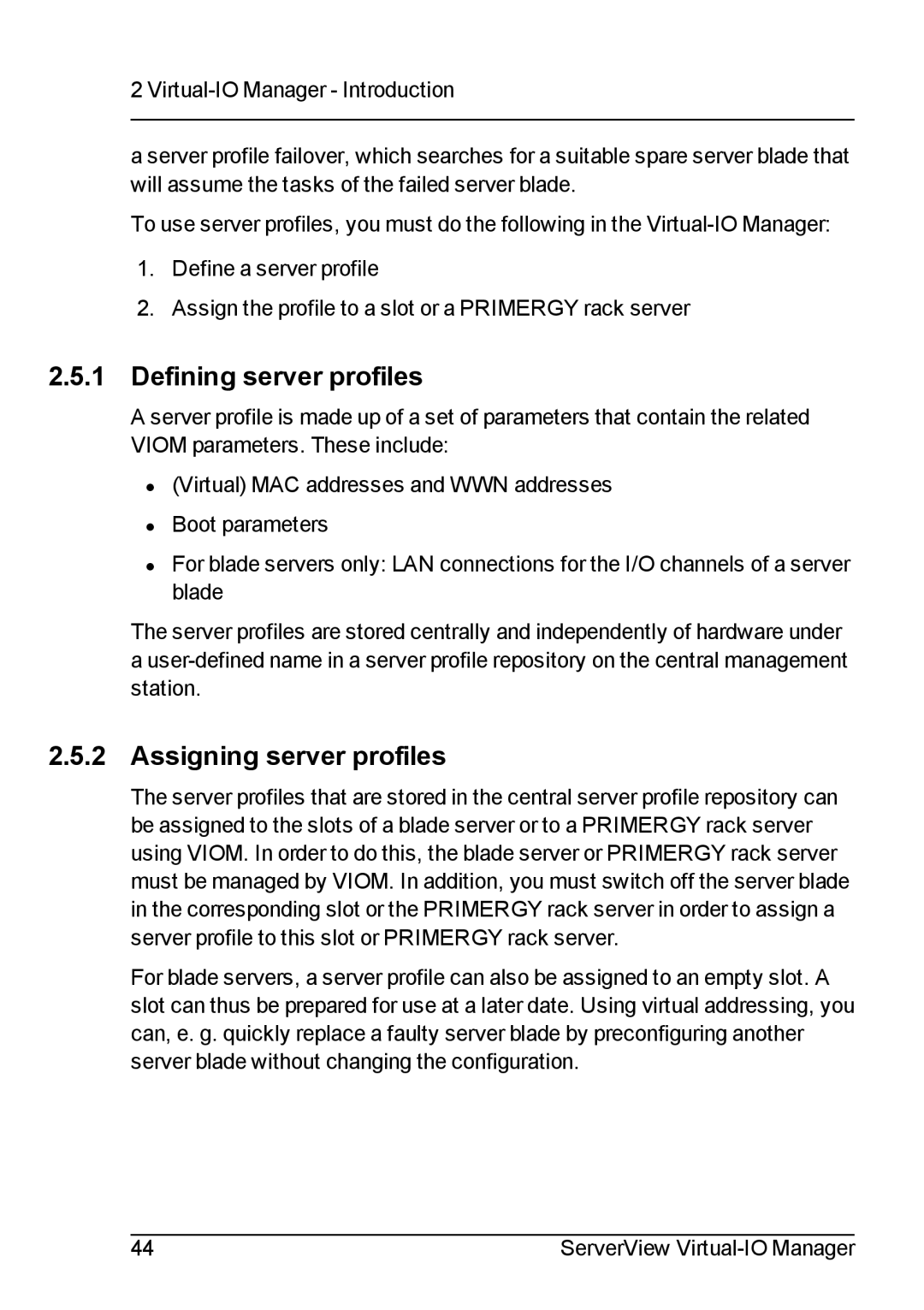
2
a server profile failover, which searches for a suitable spare server blade that will assume the tasks of the failed server blade.
To use server profiles, you must do the following in the
1.Define a server profile
2.Assign the profile to a slot or a PRIMERGY rack server
2.5.1Defining server profiles
A server profile is made up of a set of parameters that contain the related VIOM parameters. These include:
•(Virtual) MAC addresses and WWN addresses
•Boot parameters
•For blade servers only: LAN connections for the I/O channels of a server blade
The server profiles are stored centrally and independently of hardware under a
2.5.2 Assigning server profiles
The server profiles that are stored in the central server profile repository can be assigned to the slots of a blade server or to a PRIMERGY rack server using VIOM. In order to do this, the blade server or PRIMERGY rack server must be managed by VIOM. In addition, you must switch off the server blade in the corresponding slot or the PRIMERGY rack server in order to assign a server profile to this slot or PRIMERGY rack server.
For blade servers, a server profile can also be assigned to an empty slot. A slot can thus be prepared for use at a later date. Using virtual addressing, you can, e. g. quickly replace a faulty server blade by preconfiguring another server blade without changing the configuration.
44 | ServerView |
